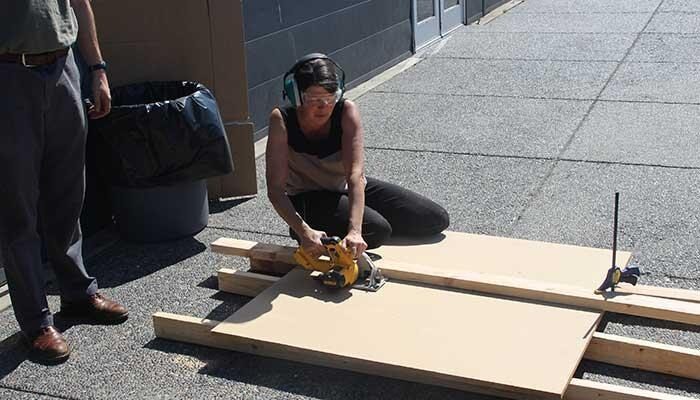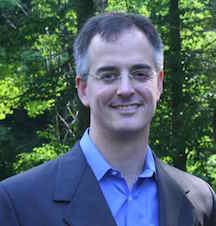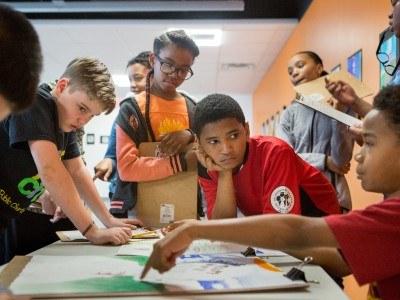Professional Learning
The Maker Fellow Program: Oakland educators build a table, rethink learning in school
Topics

Educators are the lead learners in schools. If they are to enable powerful, authentic, deep learning among their students, they need to live that kind of learning and professional culture themselves. When everyone is part of that experiential through-line, that’s when next generation learning thrives.
A maker mindset can’t be developed through lectures or course materials. This program found inspiration in the most ordinary of objects: a table.
Two years ago, many recipients of a planning grant from the NGLC Regional Fund in Oakland expressed an interest in maker-centered learning. Eager to support them, the Oakland Unified School District asked Aaron Vanderwerth from the Creativity Lab at Lighthouse Community Charter School and me to create a program that would help teachers introduce and develop maker-centered learning in their classrooms.
The Maker Fellow Program
We called it the Maker Fellow Program and focused our efforts on four main goals: help teachers develop a maker mindset, understand the relevance of maker skills in the classroom and beyond, become more comfortable working with tools and technology, and develop a plan for implementing maker-centered learning in their own classrooms.
A maker mindset can’t be developed through typical lectures or course materials alone. Our challenge was to deliver the Maker Fellow Program in an authentic way that would enable teachers to experience firsthand what the kids in their classrooms would experience by participating in a maker project. Our goal was to create a microcosm of the classroom, exposing teachers to a shared experience that increases confidence with unfamiliar tools and techniques, while providing insights into what their students will experience. We found inspiration in the most ordinary of objects: a table.
Day 1 of the Maker Workshop: A Microcosm for Making in the Classroom
Exploring Their World: From Simple to Complex
In schools, we interact daily with tables without even noticing them. But the humble table incorporates hundreds of design decisions. Our first activity, designed to help teachers learn how to examine the world around us, was taking apart a table. Using the “Parts, Purposes and Complexity” thinking routine from Agency by Design, teachers work in groups to answer the following questions about a table:
- What are its parts?
- What are the purposes for each of these parts?
- What are its complexities—how is it complicated in its parts and purposes?
It’s a deceptively simple set of questions that quickly introduces educators to the idea that everything around us was designed and made by someone just like us. It’s a crash course in actively exploring the world around us—a critical part of the maker mindset. Many teachers were skeptical that the table examination would take longer than five minutes. But an hour later, with pieces strewn all over the shop and long lists of table parts, the groups began to understand that even the tiniest piece incorporated dozens of thoughtful design decisions.
Once those tools were dropped off, and then relocated, and finally, like an exclamation point on a silent sentence, pushed so close to me that I finally said, “I think we are supposed to take it apart, you guys. He brought us these tools and he keeps moving them closer to us.” I will never dismiss a table as “simple” ever again.
—Maker Fellow participant
Designing Their World: From Complex to Simple
With the design lessons beginning to form in their minds, we then presented teachers with the real challenge: working in groups to design and build a table using two-by-fours, four-by-fours, plywood, and wood screws. In only three hours.
To help constrain 15-legged tables with jigsaw tops into what can be done in three hours, groups are asked to submit a building plan showing all the parts, how they fit together, clear measurements and a building sequence before they can receive a “building permit” that grants them permission to build. There are lessons to be learned here too:
I found our original plans hilariously complicated. I want to remember this for my teaching—to keep things simple.
—Maker Fellow participant
Building Their World: From Novice to Competent
After the building permits are approved, we introduce saws and other power tools that not all teachers may be comfortable using. Our goal here is to provide a simple framework for teachers to gain confidence using the tools and, in turn, use the same approach in their classrooms to encourage student participation and ensure safety.
We have two simple rules. First, everyone has to use every tool. You can’t hide because you’re uncertain of your abilities. In fact, anybody who says they’re scared has to go first. Second, in order to use the tool you have to answer the same four questions to understand how to use the tool safely:
- What does it do?
- How does it work?
- How can it hurt me?
- And, where is the “blood bubble”?
The blood bubble is the physical space around a person using a tool where other people can be injured. It’s a bit of a shocking name, but it really sticks in teachers’ and students’ minds.
Though I was a bit bashful and hesitant (and almost successfully avoided it) I did end up enjoying being able to use the saw. (I can’t believe I was trusted with something that could cut my hand off!)
—Maker Fellow participant
In my next article, I will share what teachers had to say about their experience after they completed the workshop. Because it’s hard to argue that you’re not a maker when you’re standing on a top of a table that you’ve planned, designed, and built.
To learn more about why maker-education is vital for our students and the professional learning that supports educators to provide it, read my first article, How do we make maker educators?
Related Posts
- How do we make maker educators? - Many educators don't identify as makers, but they should. Here's why, with a few simple strategies to help teachers adopt a maker mindset.
- 5 Best Practices For Reimagining Professional Learning This Year - How do we position aspiring next gen educators to be successful? Mirror next gen learning for students, position educators as agents of change, and enable educators to direct their learning.
- Teacher PD: The Achilles Heel of Personalized, Next Gen Learning - How will thousands of teachers re-engineer their skills to succeed in next gen classrooms? Good question. We’re working on answers.




